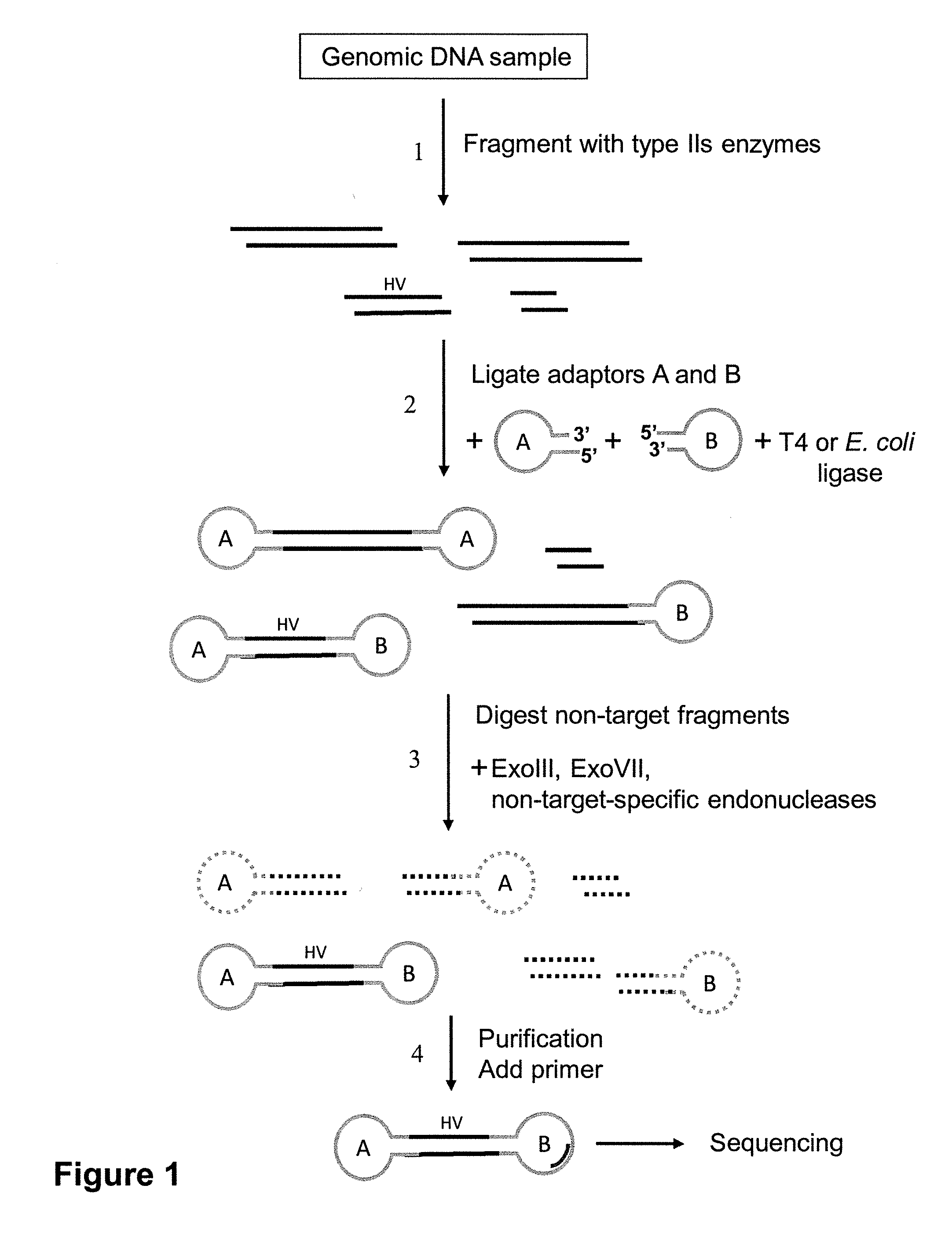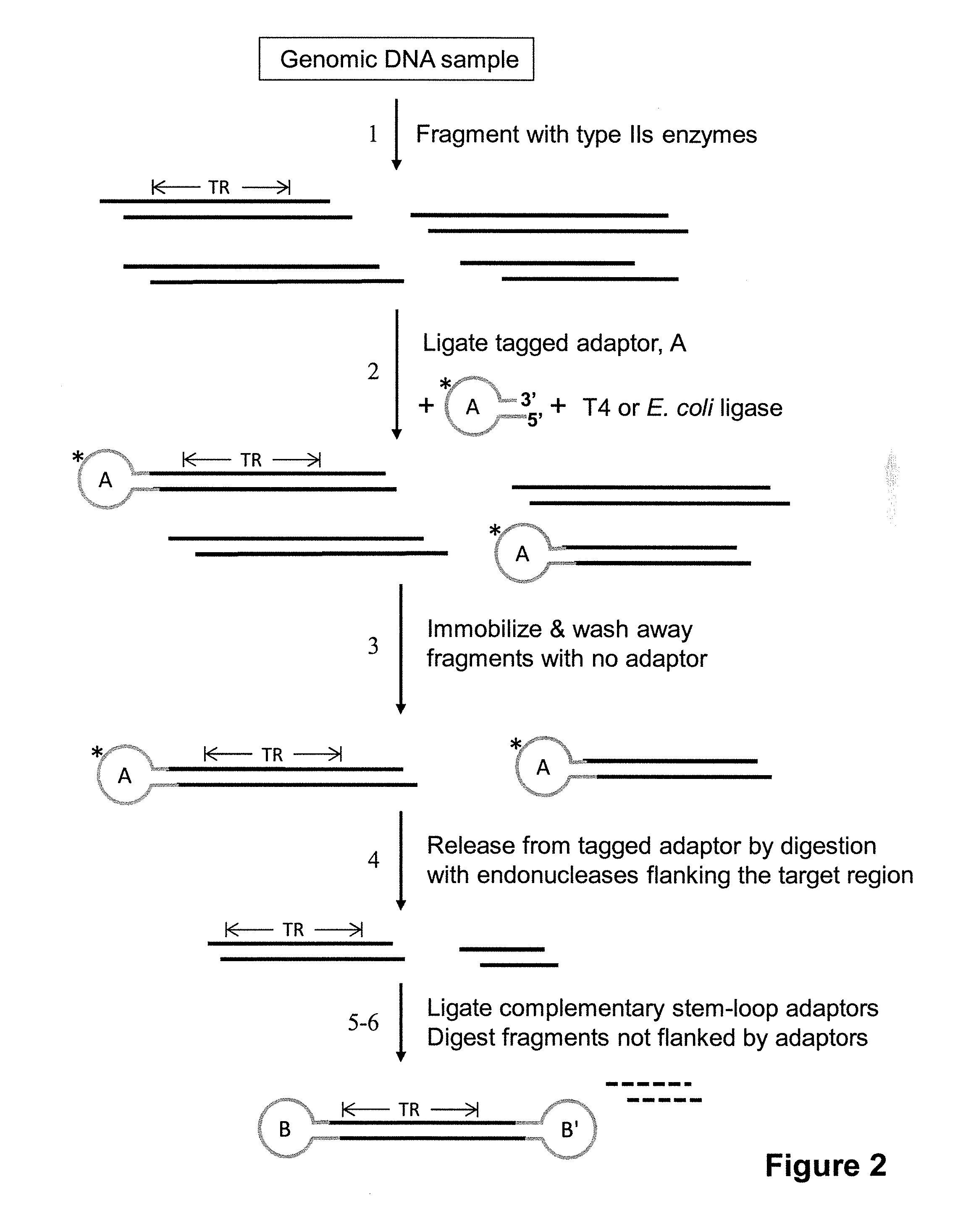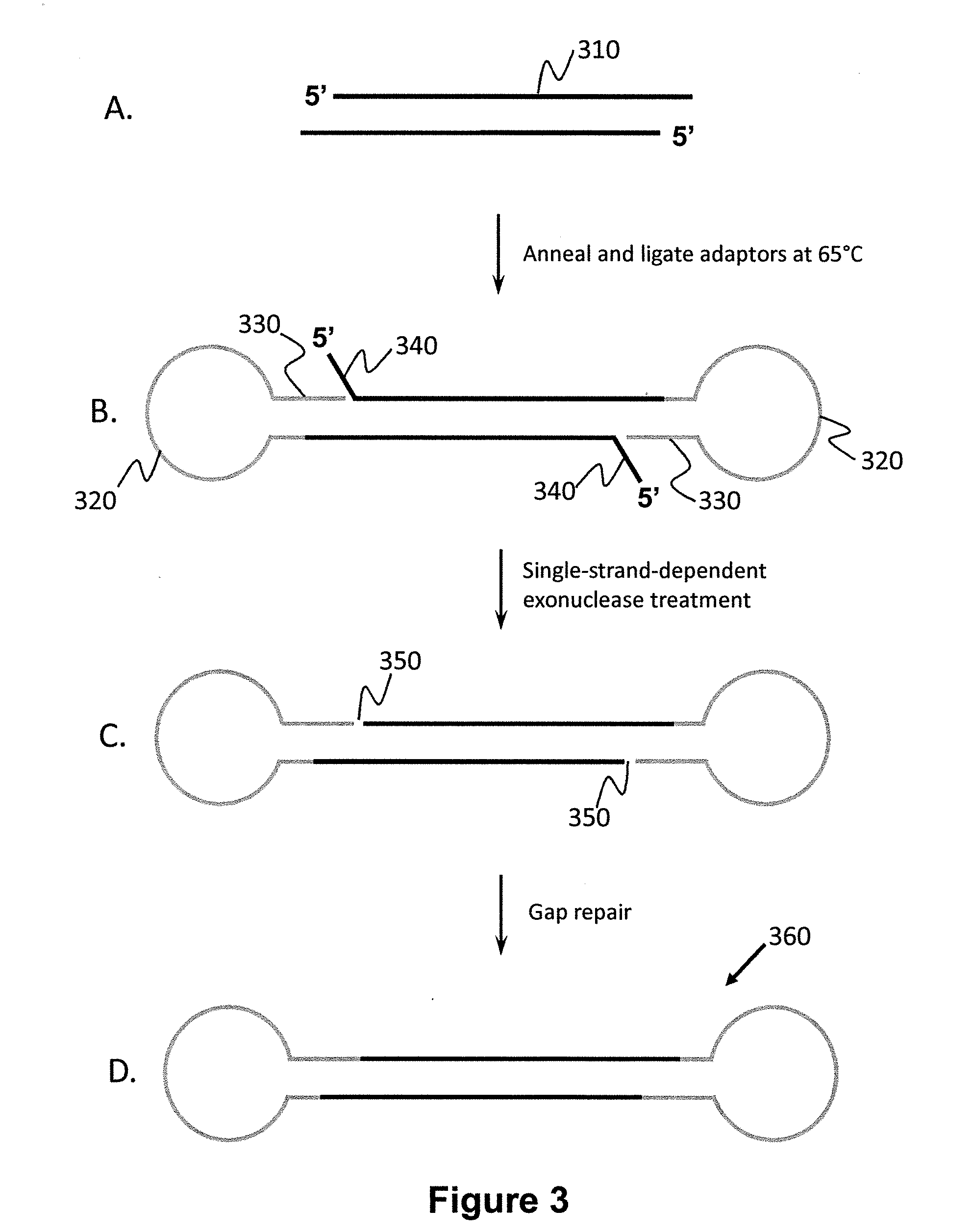Compositions and methods for selection of nucleic acids
a nucleic acid and method technology, applied in the field of nucleic acid composition and method selection, can solve the problems of large amplification, difficult hybridization strategy, and inability to perform analysis without, and achieve the effect of reducing the complexity of a population of nucleic acids and high degree of complexity
- Summary
- Abstract
- Description
- Claims
- Application Information
AI Technical Summary
Benefits of technology
Problems solved by technology
Method used
Image
Examples
examples
1. Enrichment of Specific Regions of Human Mitochondrial DNA
[0118]Human liver DNA, comprising both genomic DNA and circular mitochondrial DNA, was subjected to an enrichment procedure intended to target a 1023 bp region in mitochondrial DNA (16 kb) between HV1 and HV2 (“HV” stands for “hypervariable). Two methods were used to enrich a sample for this region. The first used type II restriction enzymes and the second used type IIs restriction enzymes. In the first case, after determining recognition sites for type II restriction endonucleases in the mitochondrial DNA region of interest, BamHI and PvuII were used to fragment the liver DNA sample. This digestion produces many fragments, including a 4963 bp fragment from the mitochondrial genome comprising the HV1-1023 bp-HV2 region flanked by 1717 bases on one end and 2223 bases on the other end. The BamHI cut site has a four-base overhang, and the PvuII cut site is blunt-ended. Two different stem-loop adapters were linked to the ends o...
PUM
 Login to View More
Login to View More Abstract
Description
Claims
Application Information
 Login to View More
Login to View More - R&D
- Intellectual Property
- Life Sciences
- Materials
- Tech Scout
- Unparalleled Data Quality
- Higher Quality Content
- 60% Fewer Hallucinations
Browse by: Latest US Patents, China's latest patents, Technical Efficacy Thesaurus, Application Domain, Technology Topic, Popular Technical Reports.
© 2025 PatSnap. All rights reserved.Legal|Privacy policy|Modern Slavery Act Transparency Statement|Sitemap|About US| Contact US: help@patsnap.com



